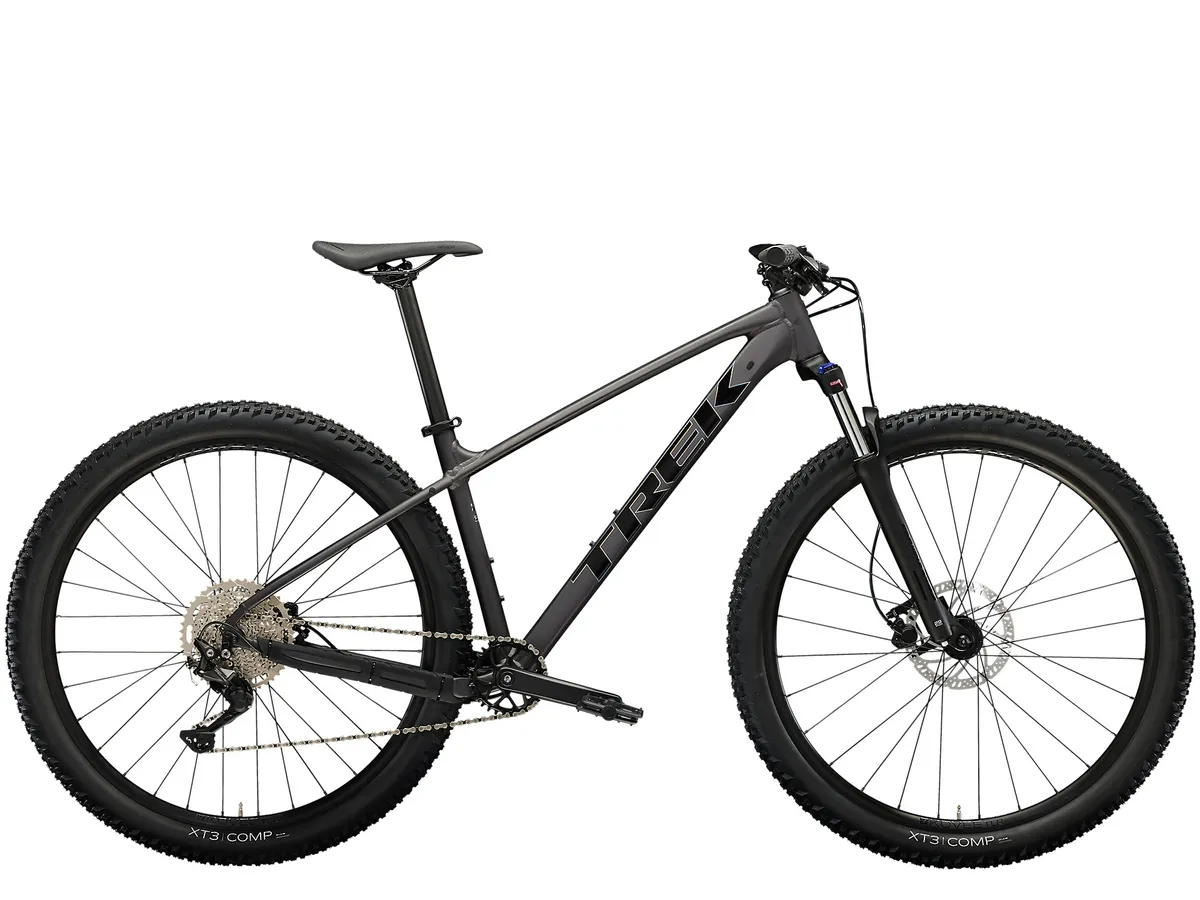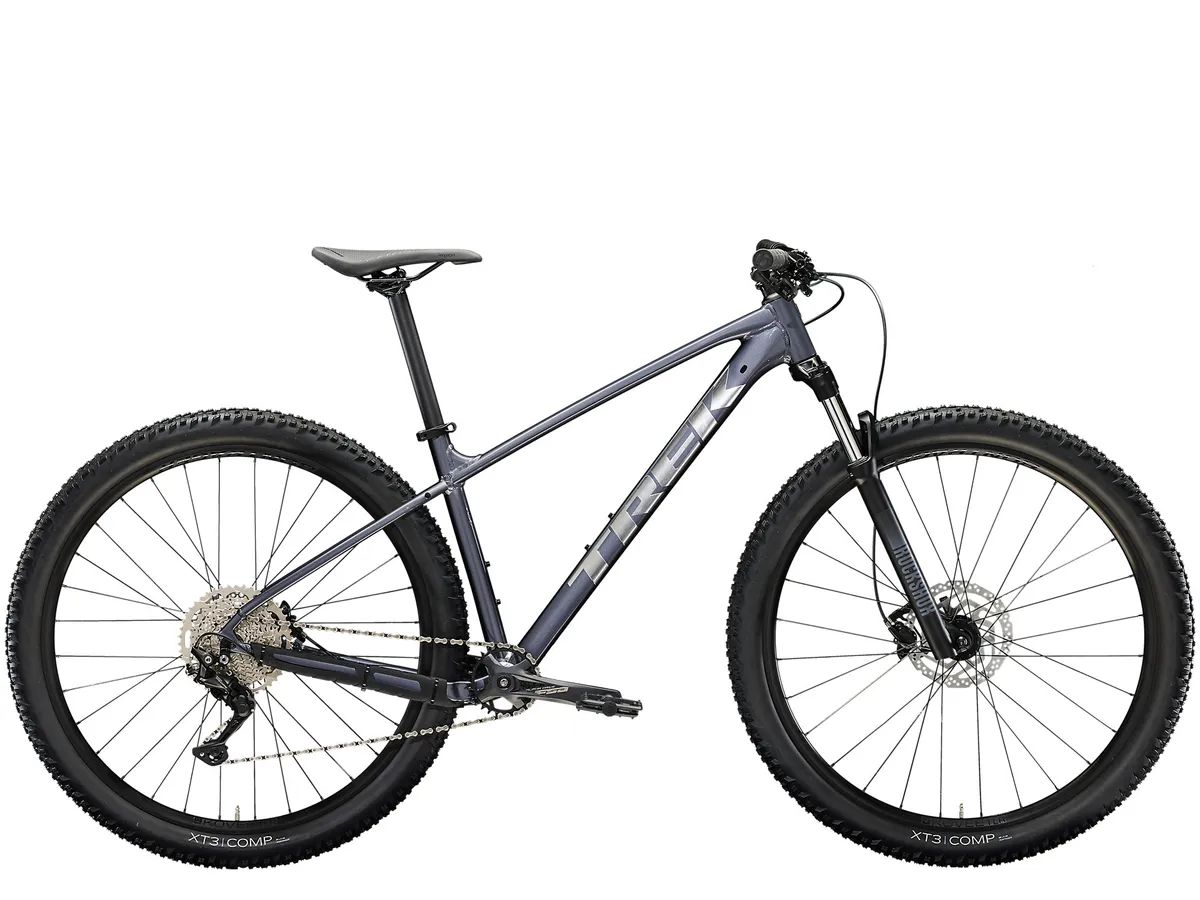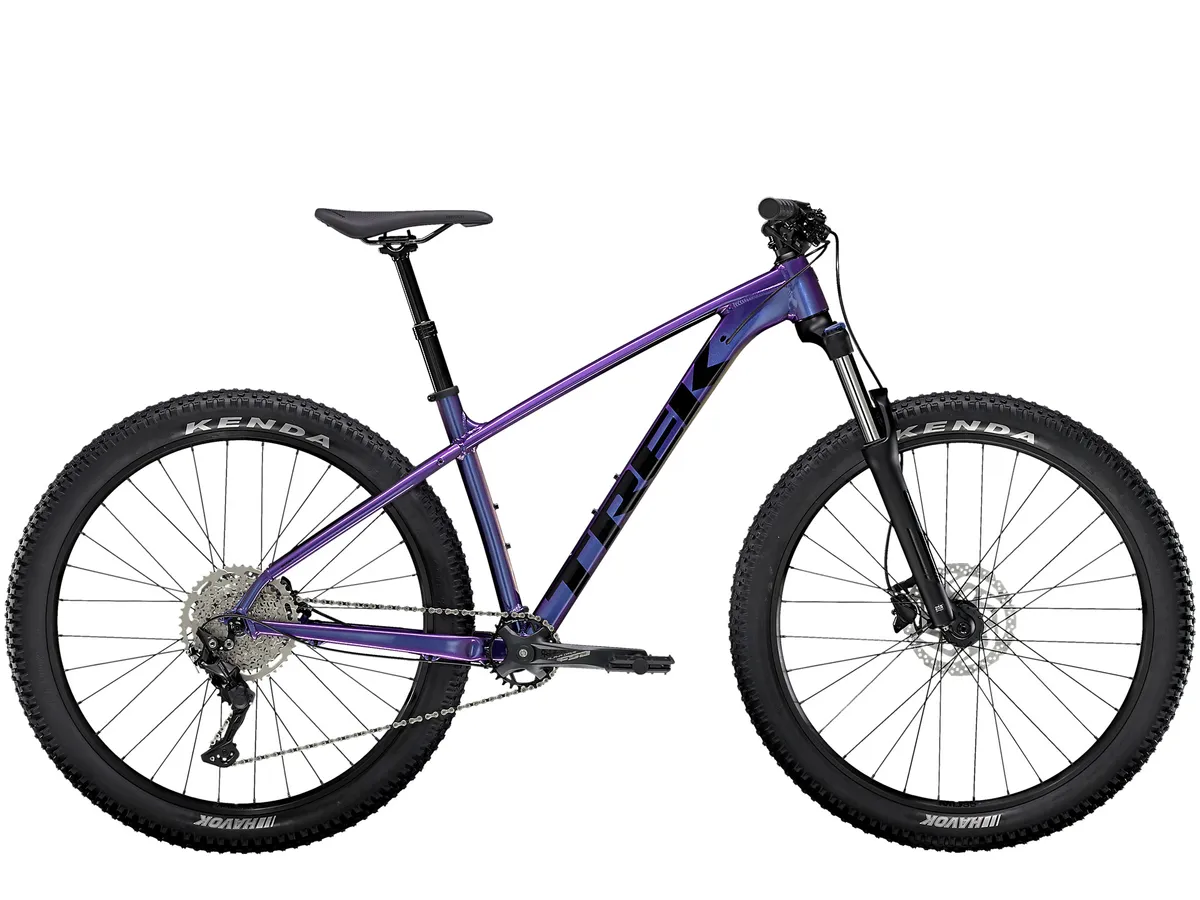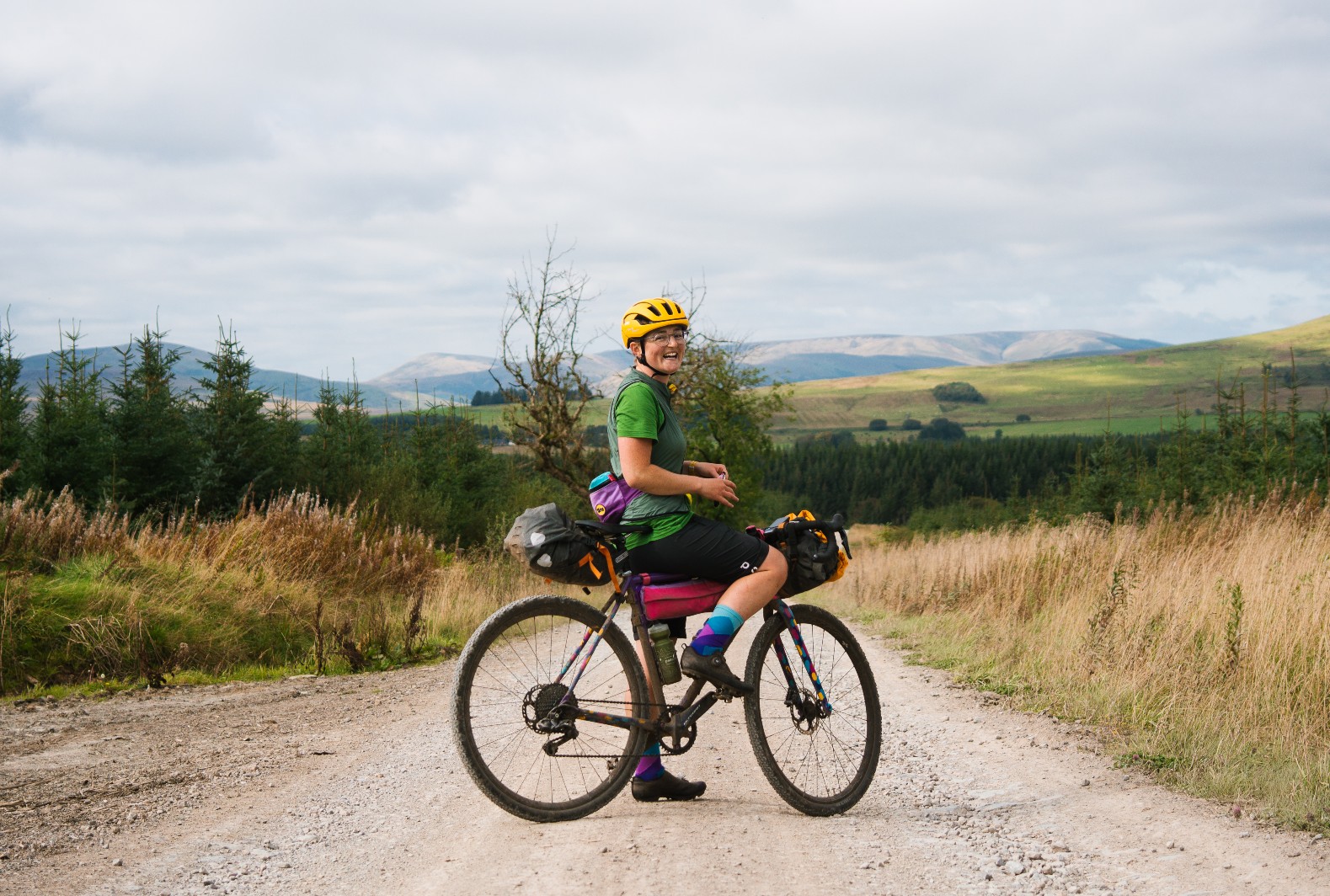Choosing which bike to buy, whether it’s your very first mountain bike, an exciting upgrade or you’re looking to try something different, is always a task worth taking your time over.
While on the face of it, some bikes may seem similar, when you dig down into the bike’s geometry, frame design, suspension setup and specs, there are often key differences that go hand-in-hand with their intended use.
Take two of Trek’s most popular hardtail mountain bikes: the best-selling Marlin and the more aggressive Roscoe. On the face of it, they look very similar, but understanding the differences will help you work out which is best suited to you.
What type of riding are you doing?
Forget drool-worthy paintjobs, detailed geometry figures and component choices to start with – the most important thing to consider when choosing the best mountain bike for your needs is to align the type of bike with the style of riding that you’re likely to be doing.
Mountain biking is a broad church, after all, covering everything from multi-day cross-country stage races to four-minute downhill runs, and everything in between.
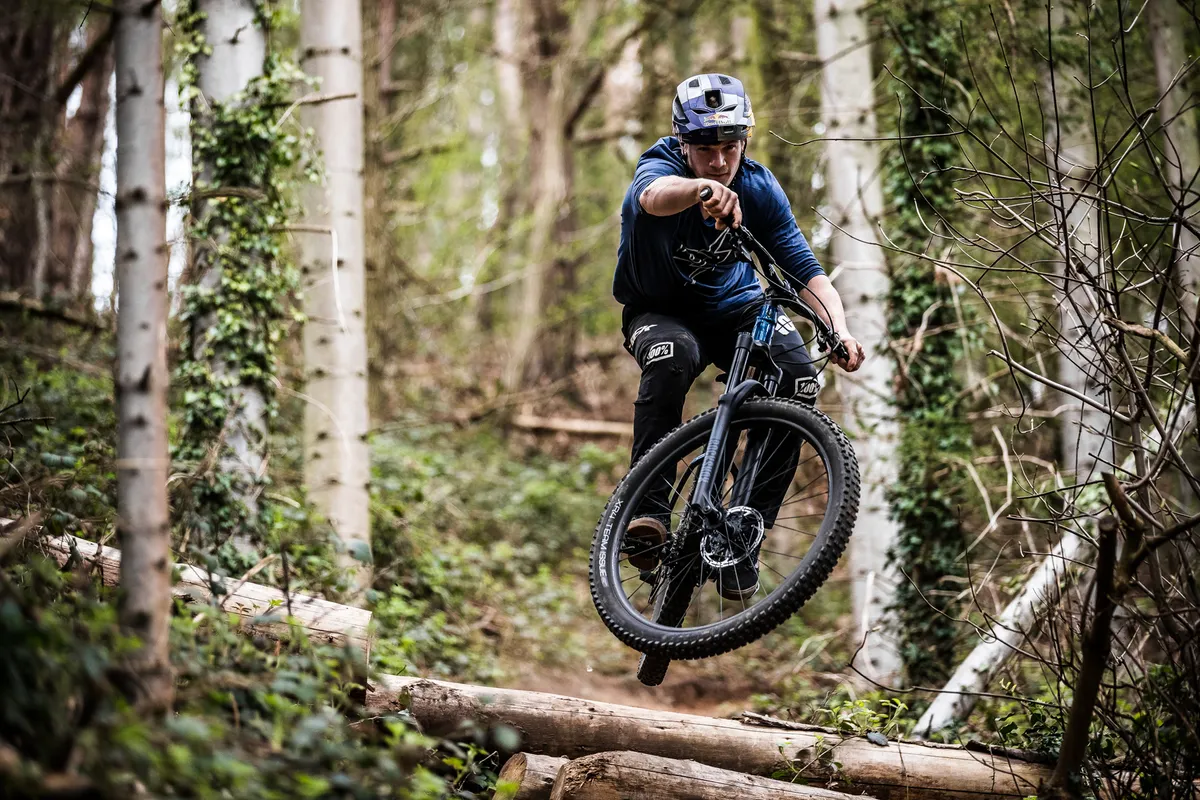
Bikes intended for these different mountain biking disciplines are designed accordingly; cross-country bikes are best for pedalling and downhill bikes are best for descending. Those in between, including downcountry bikes, trail bikes and enduro bikes, are typically built to balance pedalling efficiency and trail capability on a sliding scale between them.
The Trek Marlin is a beginner-focused hardtail that sits at the cross-country end of the mountain biking spectrum, with a 100mm short-travel suspension fork.
However, the third-generation Marlin has been updated with a number of features that make it both more trail-friendly and upgradeable.
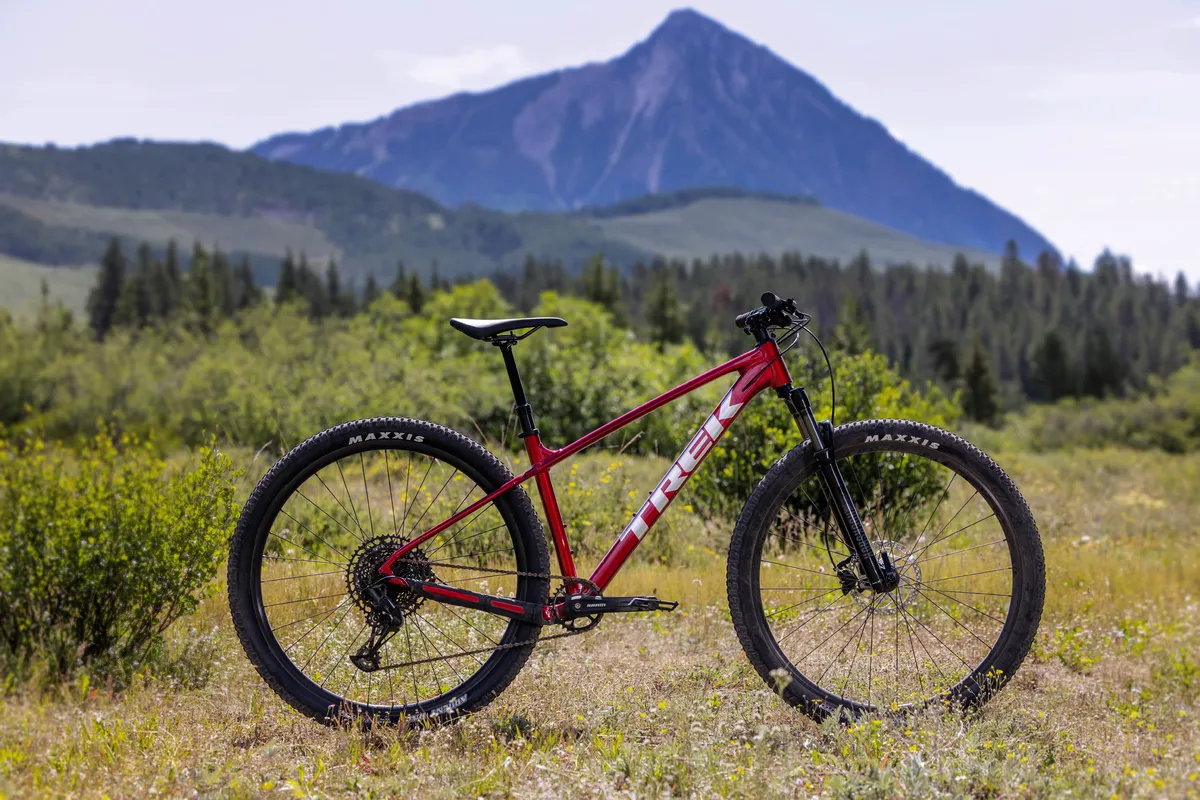
Cleverly, the Marlin also boasts some additional mounts that make it a versatile choice beyond mountain biking, with the capability to fit a kickstand, pannier rack and bags. This enables it to double up as a rugged tourer or urban commuter for cycling to work.
With a greater level of suspension on offer (140mm on most models), more trail-focused geometry, mountain-bike specific frame features and larger tyres, the Trek Roscoe, on the other hand, is a dedicated trail hardtail built for more rugged terrain.
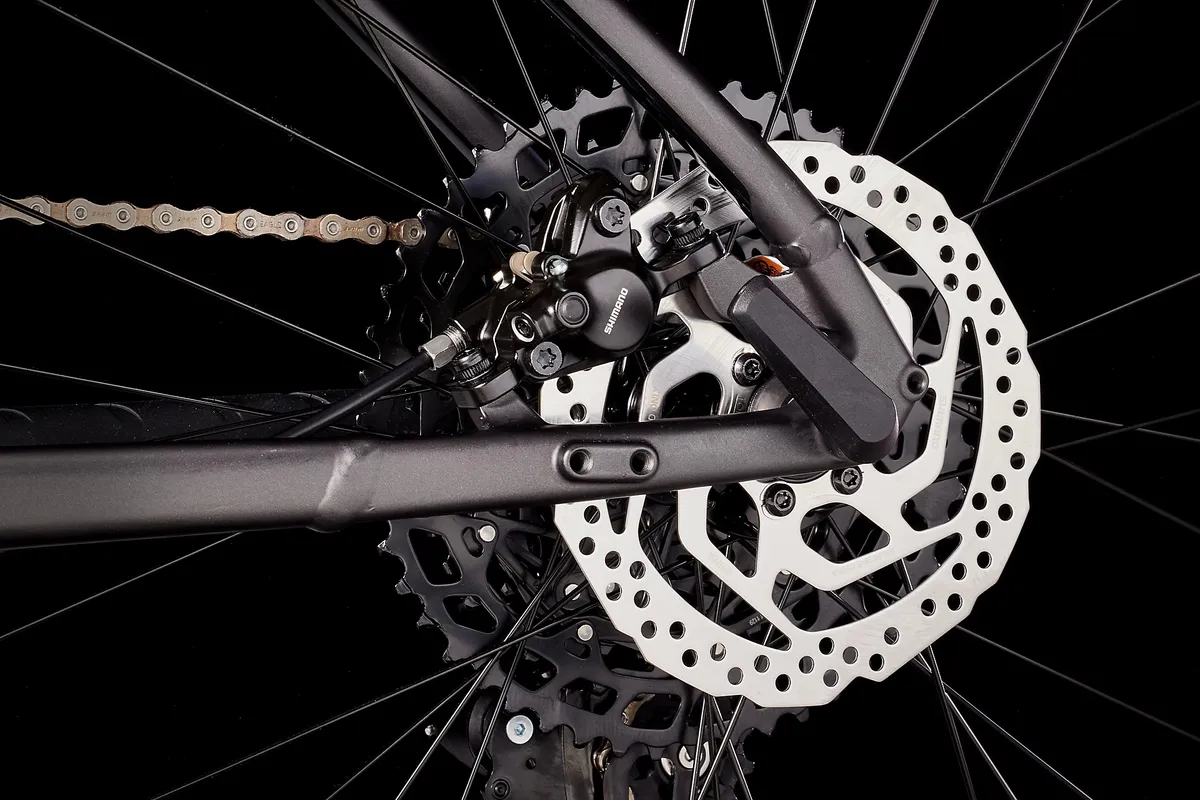
Both the Marlin and Roscoe are alloy hardtails, which helps to keep the prices towards the budget end of the spectrum. Expect to pay more for a lighter carbon fibre frame if you cast your eye at the Procaliber family, designed with fast-paced cross-country racing in mind.
We’ll take a look at the specific features of the Marlin and Roscoe in turn. Key to weighing up which of these hardtails is best for you is deciding what you want to do with it, whether you’re looking to push yourself on challenging trails or are looking for something that’ll help you get about town just as easily as it takes on a local off-road loop.
Geometry
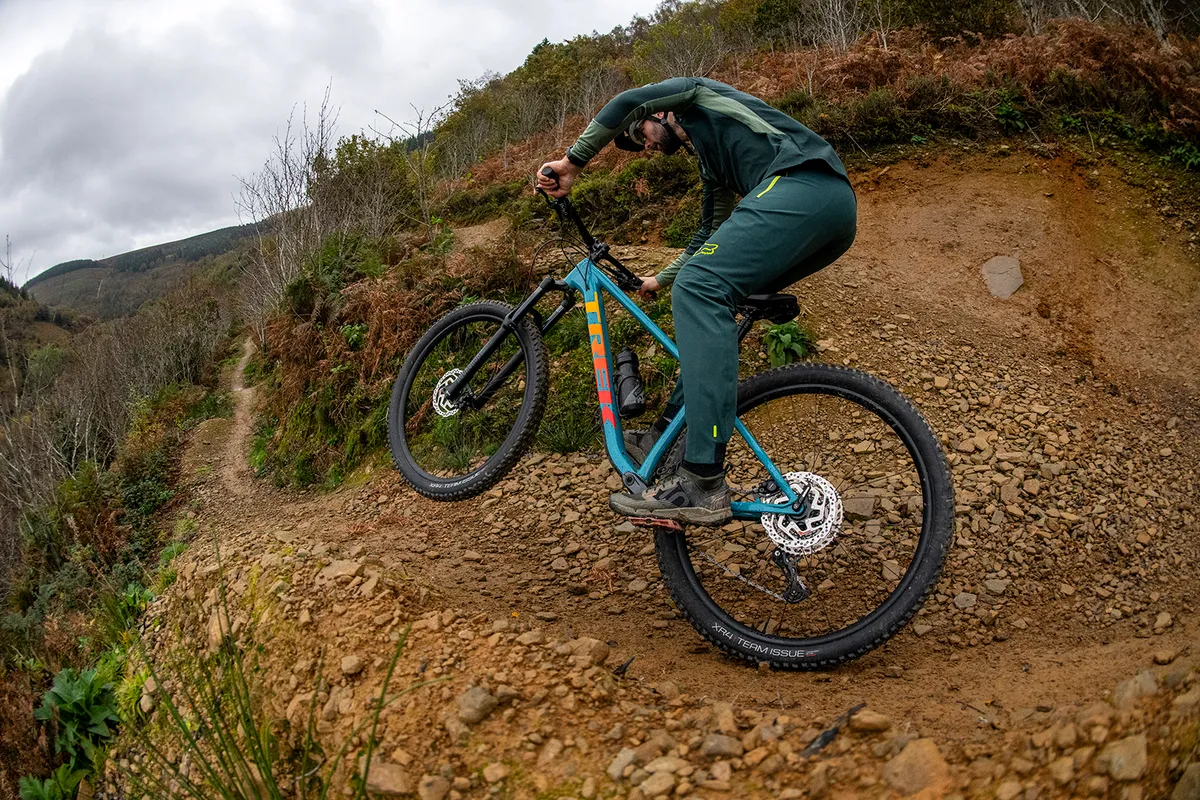
Because the frame design is so key to how bikes feel to ride, geometry is a good place to start when comparing bikes. You can read BikeRadar’s full guide to mountain bike geometry for more; we’ll focus on the key numbers when comparing the Trek Marlin and Trek Roscoe here.
In terms of head tube angles, while the Marlin’s geometry, updated on the newest third-generation models, has recently been slackened to 66.5 degrees, the Roscoe hardtail is designed around an even slacker 65-degree angle.
Essentially, the slacker the head tube angle, the further forward the front wheel is placed in front of you, and the more capable the bike becomes over rougher terrain.
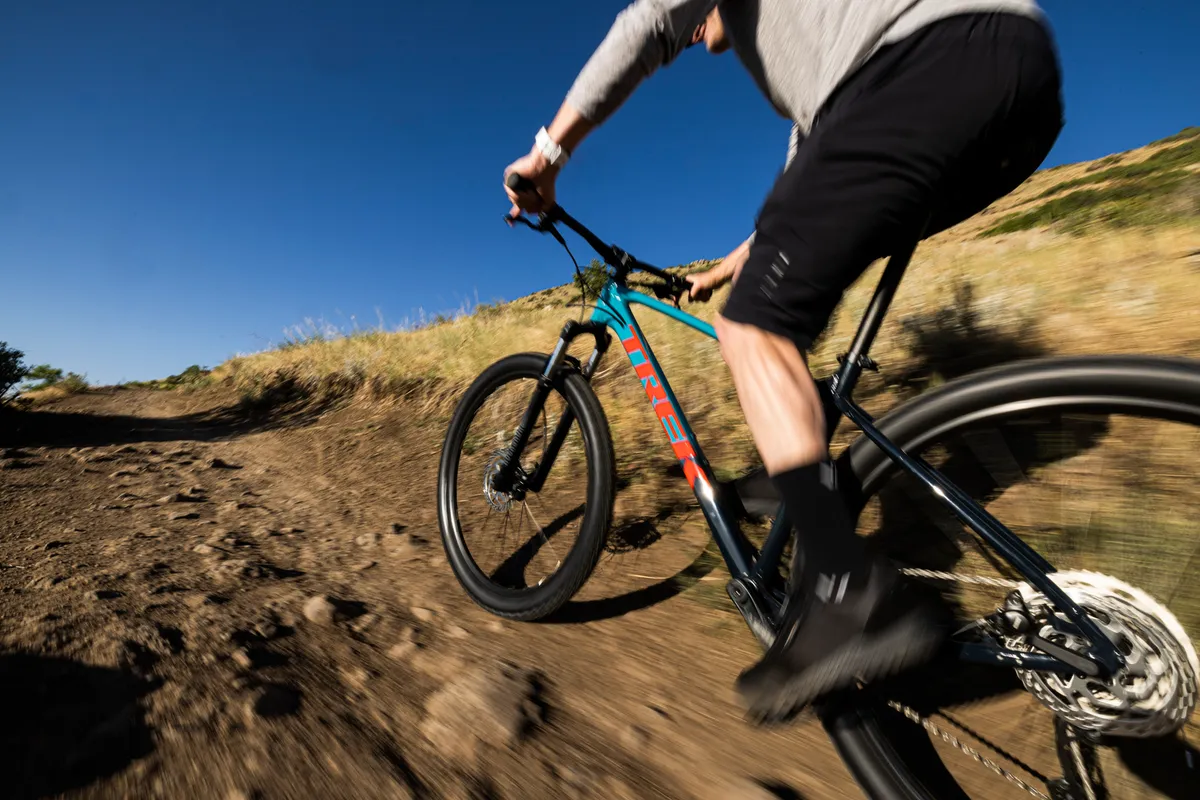
In combination with the greater level of suspension travel, the slacker head tube angle of the Roscoe means you have to shift your weight further forwards on the bike to weight the front wheel. This results in a more aggressive riding position compared to the more upright position of the Marlin.
Seat tube angles are similar across the Marlin and Roscoe, at 73.4 and 73.1 degrees respectively, steepened to enhance pedalling efficiency for flatter gradients, pedal ups and linking sections of trail.
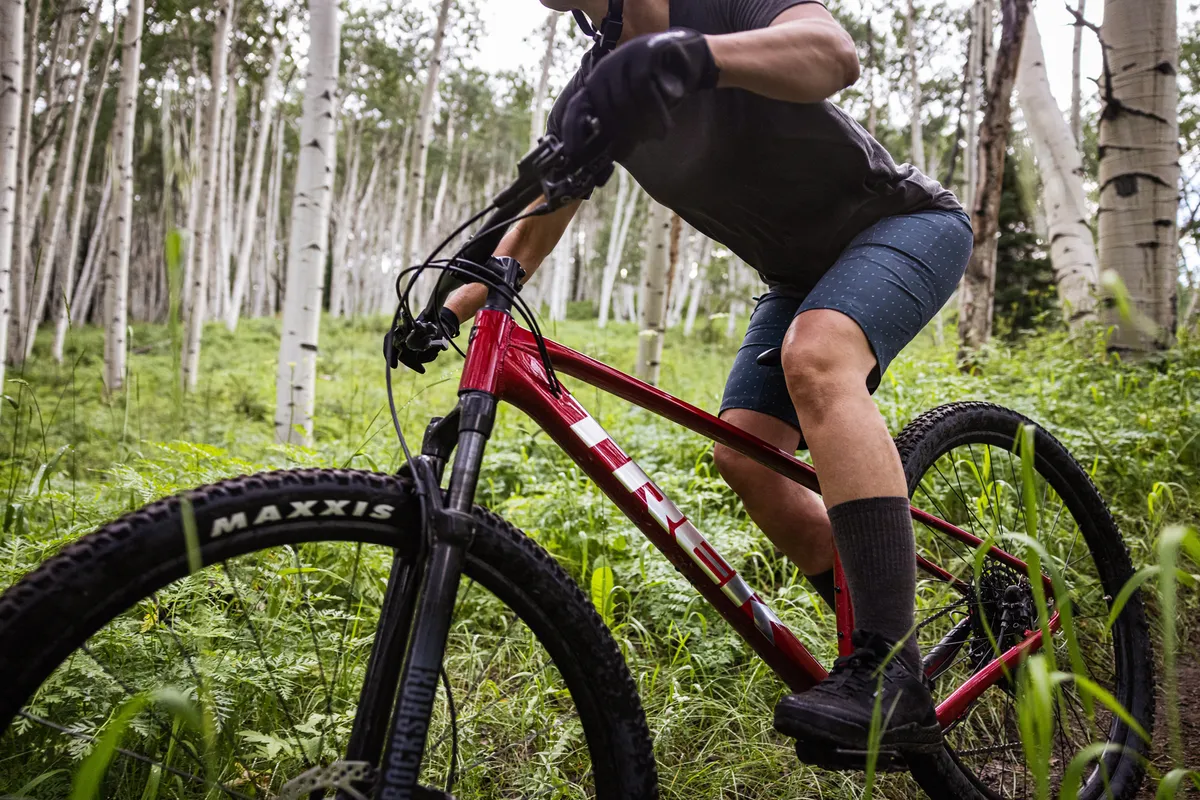
Both the Roscoe and Marlin offer a wide range of frame sizes, including Trek’s extra size option sitting between medium and large. However, it’s the Marlin that can accommodate the widest range of riders, catering for teens as well as adults with the XXS option.
Another point of difference between these two hardtails is the handlebar width, with the Marlin using 690/720/750mm bars (dependent on frame size), while the Roscoe is fitted with wider 750/780mm handlebars, again for added control on steeper and trickier off-road descents.
Suspension
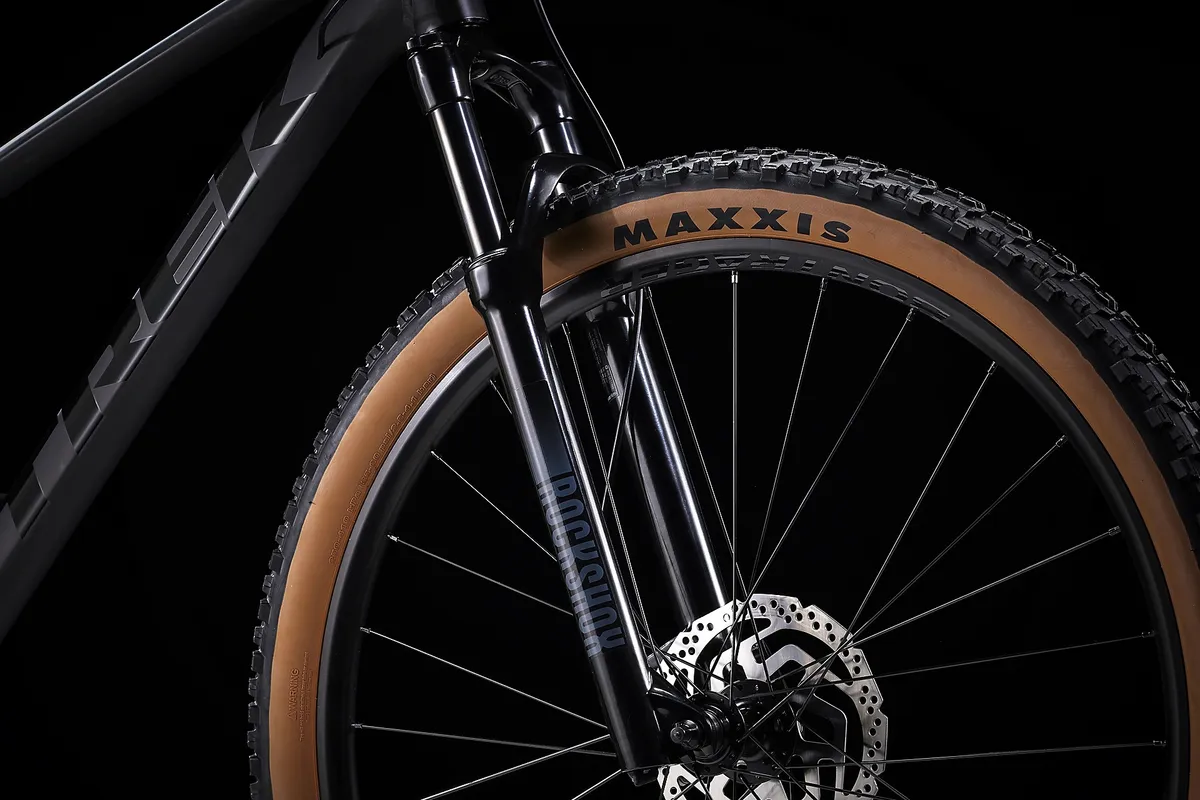
With a cross-country-oriented design for efficient pedalling, the Marlin uses a short-travel 100mm fork.
For a more trail-ready ride, the new third-generation Marlin can accept a 120mm-travel fork on all frame sizes from XS up, if you fancy upgrading your ride as you gain confidence and start to tackle larger trail features.
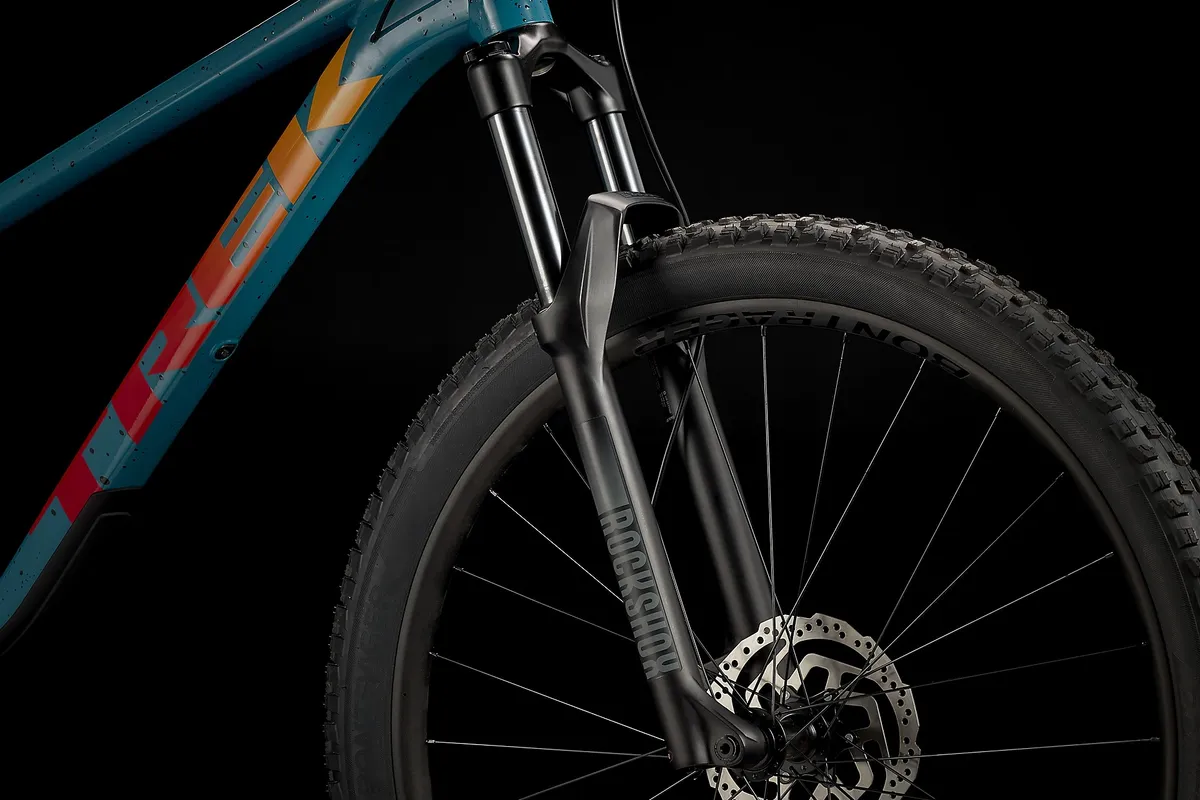
With a hefty 140mm suspension on offer, the Roscoe is positioned firmly in the aggressive hardtail category, best suited for trail riding.
The budget Roscoe 6 is the only exception, retaining a shorter-travel 120mm fork.
Frame features
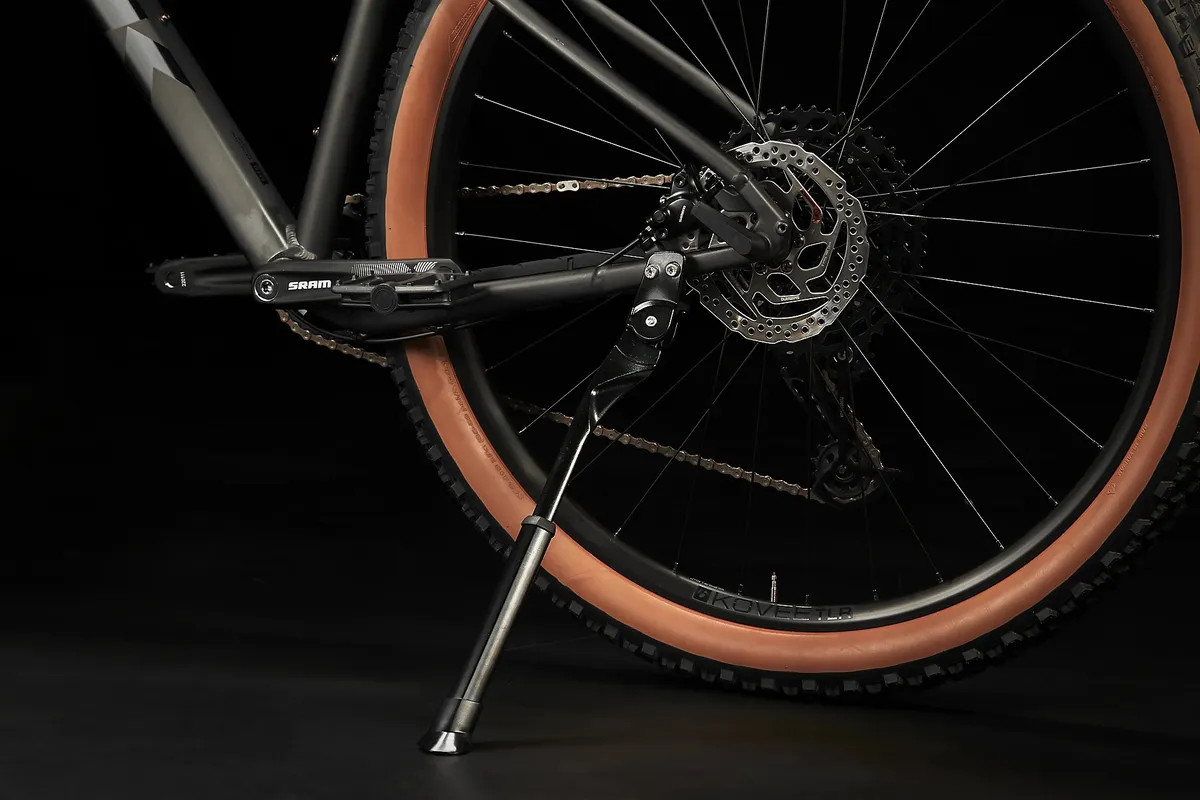
With a more moderate level of suspension, the Marlin can double up for urban duties as well as hitting the dirt, so Trek has added a number of frame features with the commuter in mind.
You’ll find a mount for a kickstand as well as pannier rack mounts, so you can kit out your Marlin to carry luggage, whether that’s using it as a commuter bike around town or on a longer bike touring adventure.
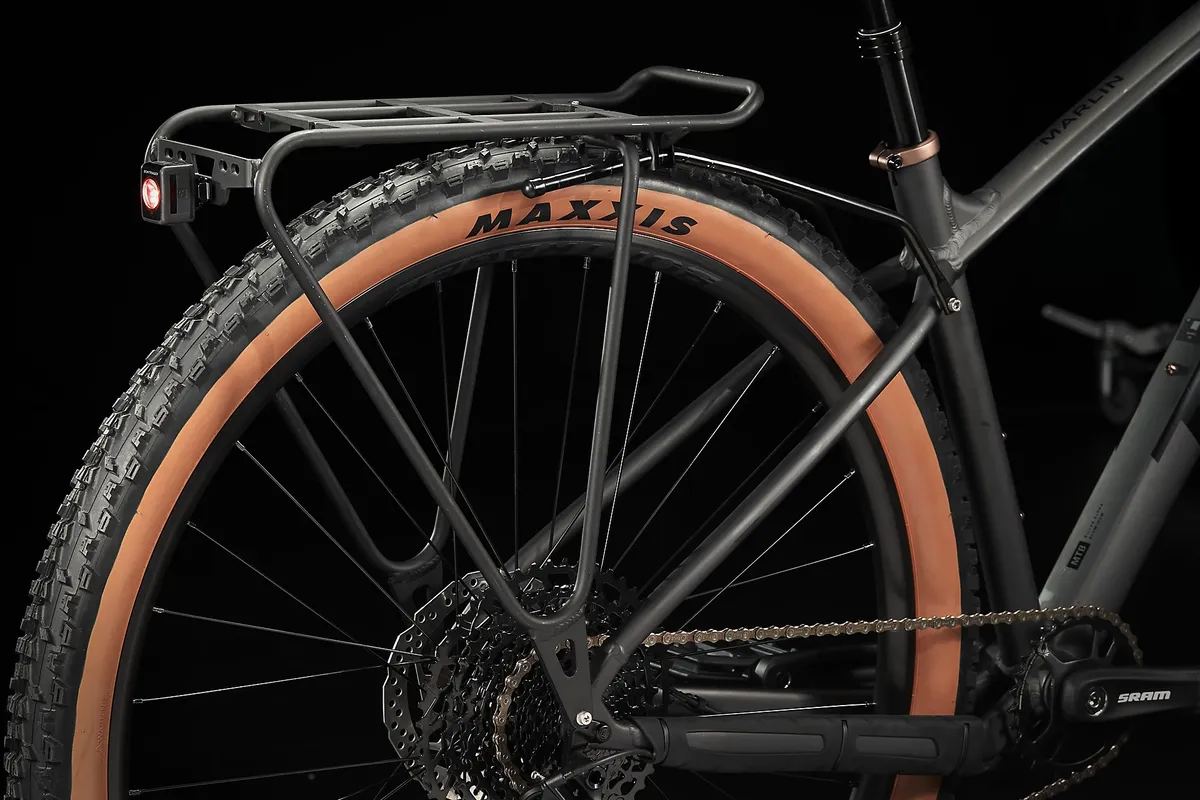
The updated, third-generation Marlin frame also boasts internal cable routing for a dropper post, should you wish to add one later down the line. A rubberised chainstay guard comes pre-fitted to all Marlin models, to protect the frame from chain slap and minimise any noise.
As a more dedicated dirt shredder, the Roscoe doesn’t include the same rack and kickstand mounts, streamlining the frame.
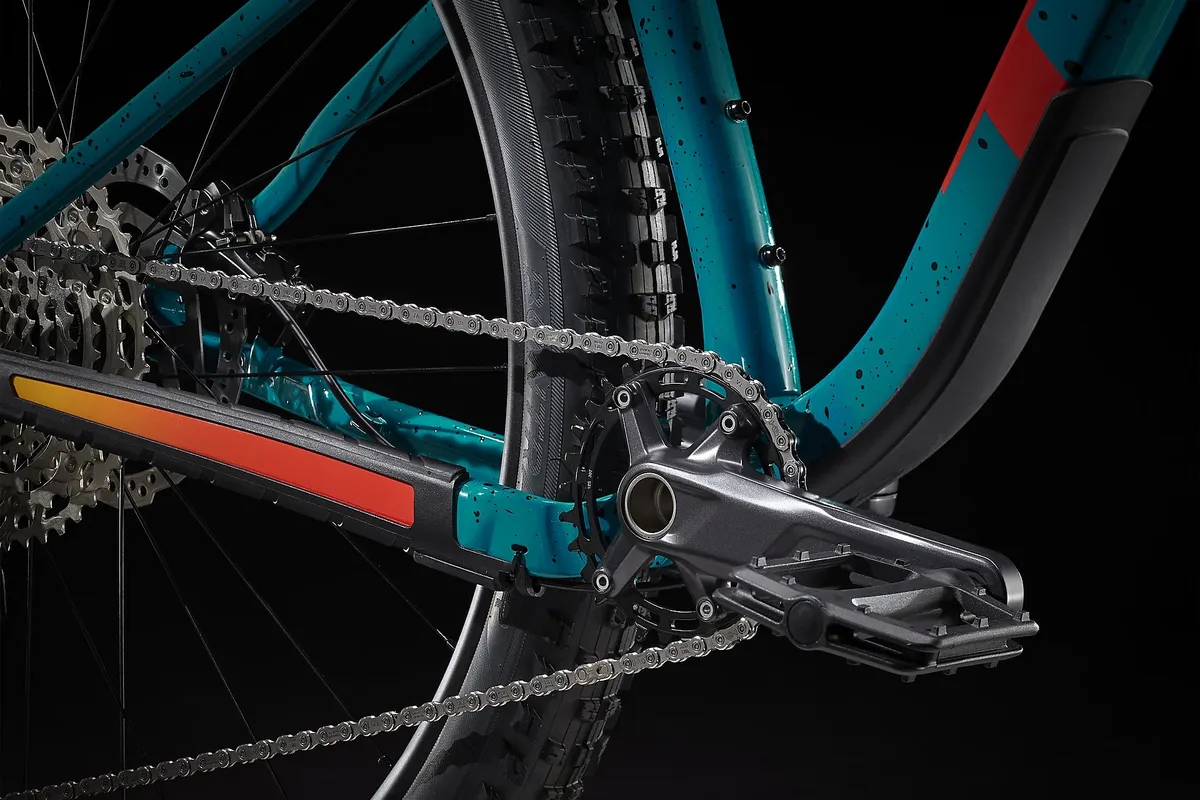
Instead, you’ll find an in-built down tube guard in addition to the chainstay protector, designed to take the impact of stones and other trail debris.
You’ll also find ISCG mounts around the bottom bracket on the Roscoe, allowing you to fit a chain guide or bash guard.
Wheels and tyres
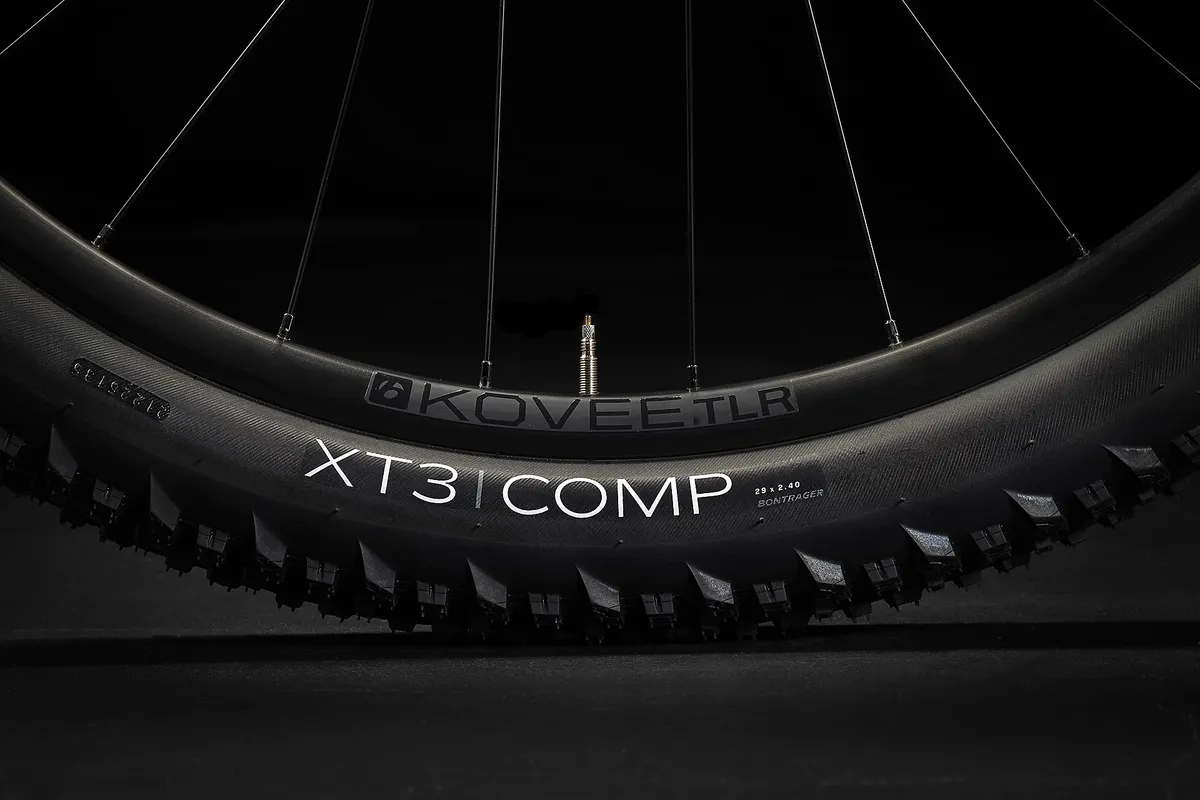
While most of the Marlin and Roscoe models on offer use modern 29er wheels, they do vary by frame size to offer the best fit for shorter riders.
For the Marlin, size XXS uses 26in wheels, sizes XS and S both use 27.5in wheels (also known as 650b), while the larger sizes use 29er wheels.
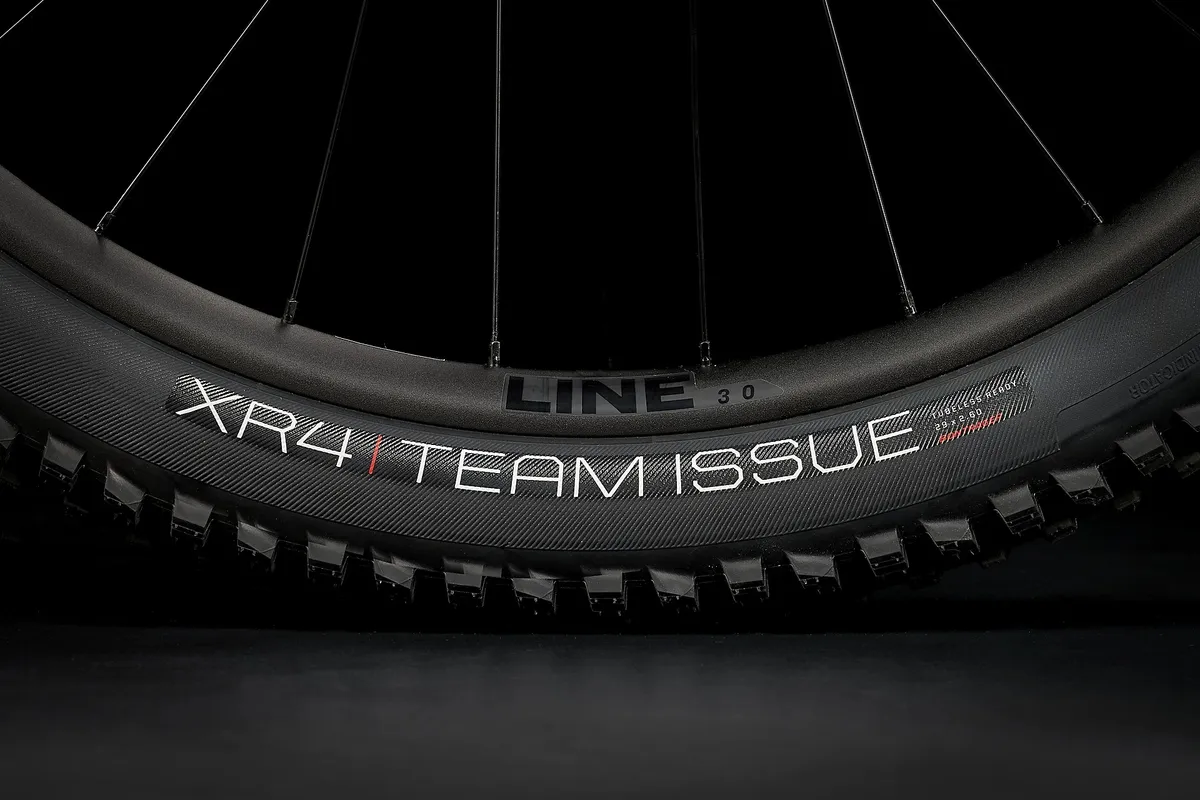
There are slightly fewer sizes on offer with the Roscoe, starting with XS, which uses 27.5in wheels. With the exception of the Roscoe 6, which is built with 27.5in wheels across all sizes, the rest of the Roscoe models and sizes use 29in wheels.
While we’re talking rolling stock, one of the main differences between the Marlin and Roscoe is the tyre clearance, hence the width of tyres they are fitted with.
The new Marlin can accommodate up to 2.4in-wide mountain bike tyres with 29in wheels, whereas the Roscoe is fitted with plus-size 2.6in rubber, also with 29in wheels, for added traction. This wider rubber is fairly typical of trail hardtails, yielding extra grip in lieu of rear suspension.
To drop or not to drop
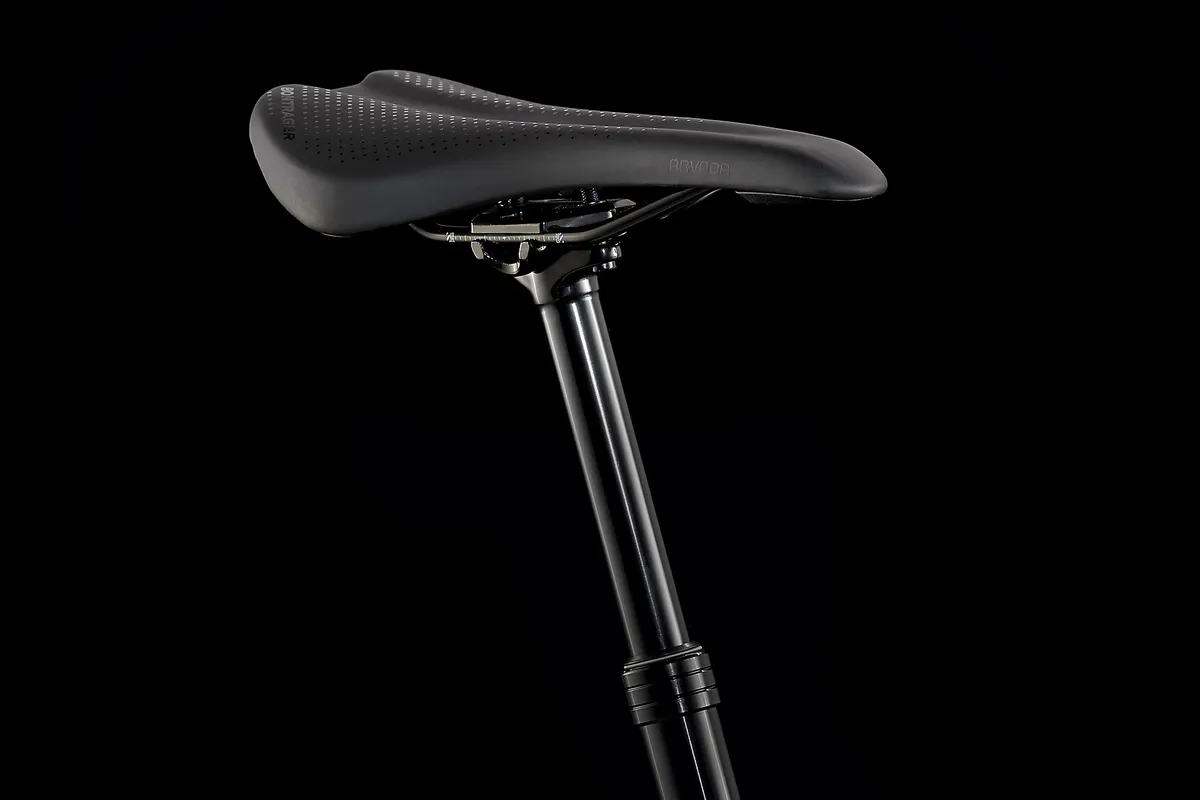
A dropper post is a key component when it comes to tackling trail features and steeper off-road terrain. You’ll find a dropper post included on some, but not all Trek hardtail mountain bikes.
A standard seatpost saves on both cost and weight, so with the exception of the top-tier Marlin 8, the Marlin family isn’t specced with a dropper. The good news is that internal cable routing means you can easily add one later though – a popular option when it comes to upgrading a mountain bike.
All Roscoe models are equipped with a dropper post from the get-go, correlating to their design for rowdier off-road pursuits.
Specs
With five models on offer, starting from a budget-friendly £475 / €599 for the Marlin 4 up to £1,230 / €1,349 for the Marlin 8, the Trek Marlin makes for an accessible entry to mountain biking. Third-generation Marlin models start from £760 / €849 with the Marlin 6.
The Roscoe starts at £1,160 / €1,299 / $1,199.99 for the Roscoe 6, though bikes from the Roscoe 7 (£1,620 / €1,799 / $1,899) onwards feature the latest frame, with the range topping out at £2,550 / €2,799 / $2,799.99 for the Roscoe 9.
You can expect to find an improvement in component choice and performance as you increase the amount you spend. For example, the base-level Marlin 4 is kitted out with Tektro M280 mechanical disc brakes, whereas the top-spec Marlin 8 uses more powerful Shimano MT200 hydraulic disc brakes.
It’s worth noting that Trek’s recent overhaul to the Marlin frame only applies to models 6, 7 and 8, whereas models 4 and 5 retain the previous frame design to help keep these entry-level options priced competitively.
Another good example of how the components differ between models is the wheel and tyre setup. The entry-level Roscoe 6 uses tubeless-ready rims but not tubeless-compatible tyres, the Roscoe 7 features both tubeless-compatible rims and tyres, though set up with tubes, and the top two Roscoe 8 and 9 models are set up tubeless from the get-go.
The quality and configuration of drivetrains change significantly as you move up through the models. All of the third-generation Marlin hardtails, and all Roscoe models, use modern 1x drivetrains, while the second-generation Marlin 4 and 5 use a triple chainring and double chainring respectively.
Trek Marlin vs Trek Roscoe, so which should you choose?
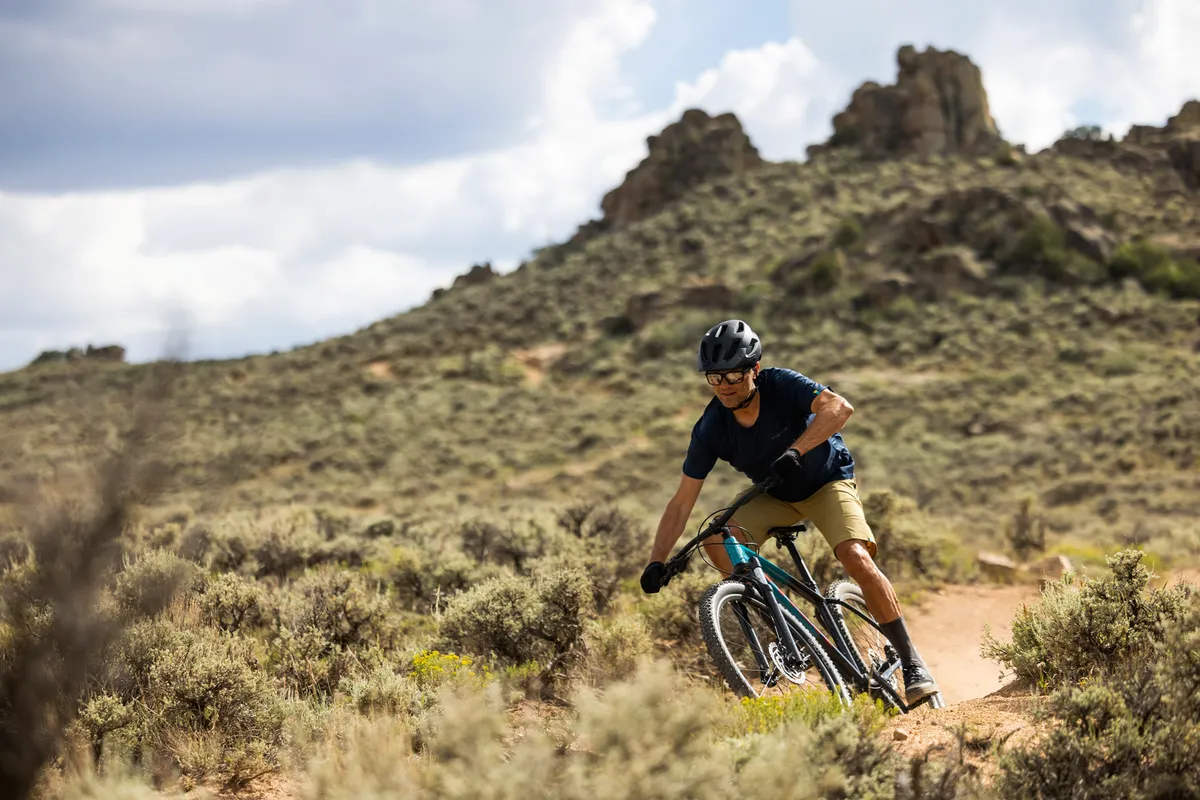
Despite initial appearances as fairly similar alloy hardtails, the Trek Marlin and Trek Roscoe are actually very different machines.
Choosing between them largely comes down to what sort of riding you’re planning, and whether you’d like to prioritise versatility or are seeking all-out trail capability.
Want something that’ll make for a great first mountain bike for teens and adults alike, with the added versatility to take you across town to work and back, as well as to the trailhead? The do-it-all Marlin is the smarter choice.
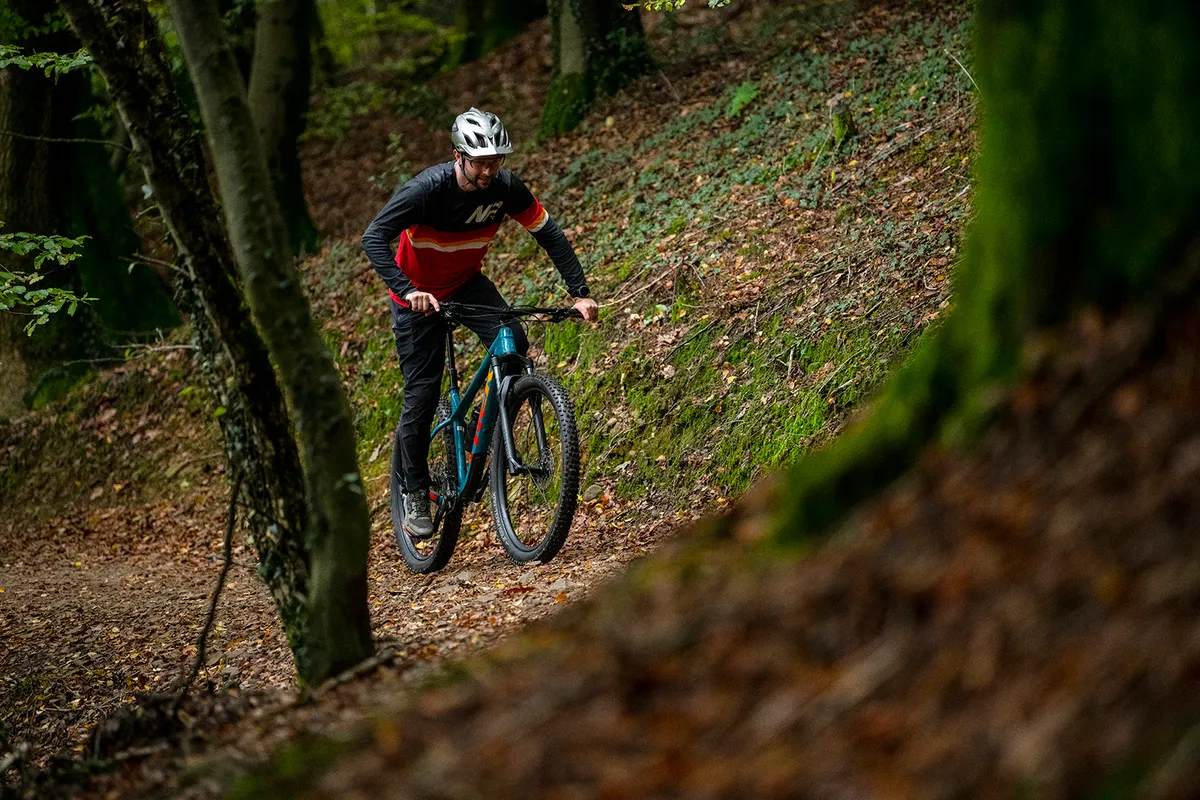
Looking for a ride that’ll level up to meet you as you progress over larger, steeper and techier trail features? Kitted out with a dropper post, progressive frame geometry, wide, grippy tyres and a beefy 140mm fork, the Roscoe is Trek’s dedicated trail option. There’s a reason it’s dubbed the ‘hardcore hardtail’.
Once you’ve worked out which sounds most like you, then you have a choice of four or five models, each with their own component options. Spending more as you work up through the models will give improved performance, as well as a lighter build, which will only help to widen your grin once you swing a leg over.
Can’t afford the top model from the outset? The good news is that both the Marlin and Roscoe have been designed to be upgrade-ready when the time comes.

